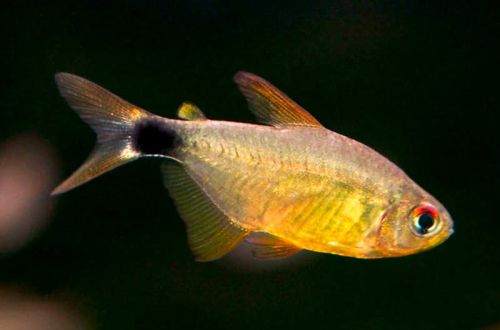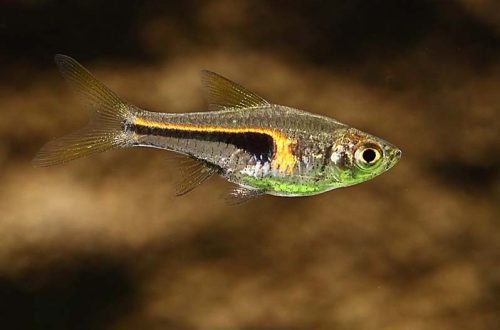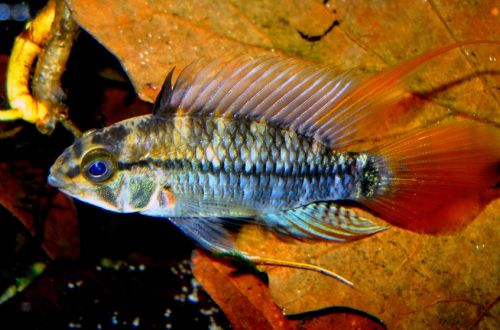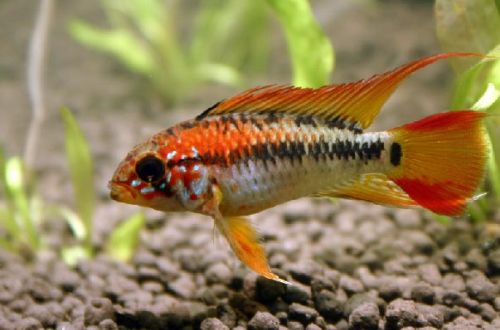
Fire-tailed apistogram
Widget’s apistogram or Fire-tailed apistogram, scientific name Apistogramma viejita, belongs to the Cichlidae family. A bright beautiful fish with a calm disposition, thanks to which it can get along with many other species. Easy to maintain, provided the right conditions are provided.

Contents
Habitat
It comes from South America from the territory of modern Colombia. Lives in the Meta river basin (Rio Meta). The river flows through the plains and is characterized by a slow calm current. The shores have many sandbanks, along the channel there are many islands. The water is cloudy and warm.
Brief information:
- The volume of the aquarium – from 60 liters.
- Temperature – 22-30°C
- Value pH — 5.5–7.5
- Water hardness – soft (1-12 dGH)
- Substrate type – sandy
- Lighting – subdued
- Brackish water – no
- Water movement is weak
- The size of the fish is 6–7 cm.
- Nutrition – meat feed
- Temperament – peaceful
- Keeping in a group with one male and several females
Description
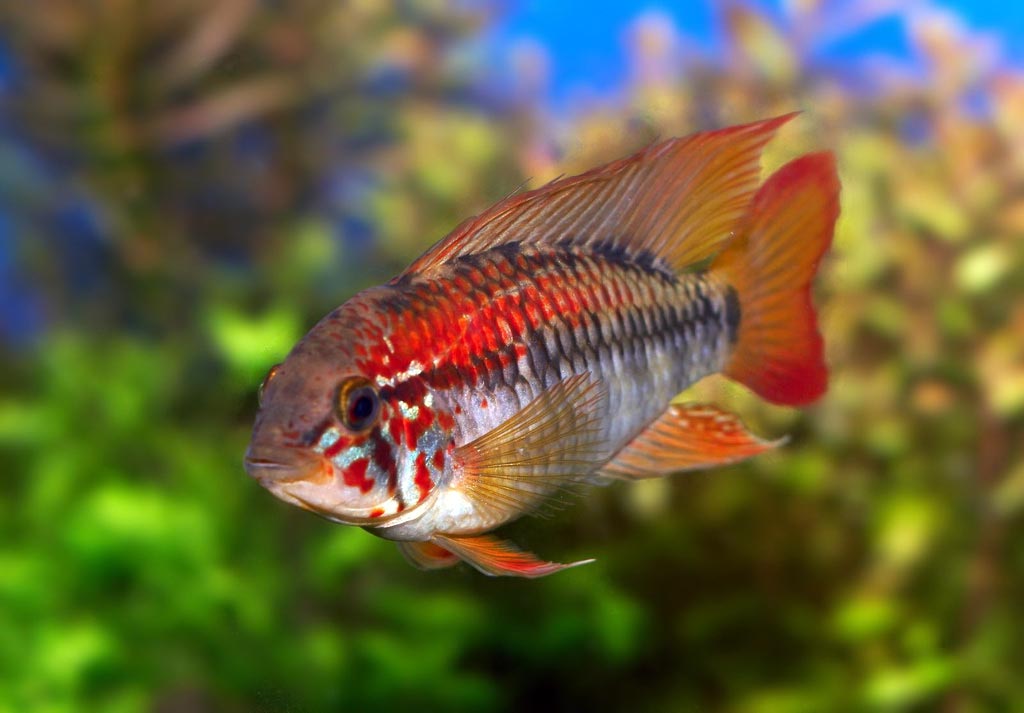
Adult males reach a length of about 7 cm, females are somewhat smaller – no more than 6 cm. In color and body pattern, it resembles its closest relative Apistogramma McMaster and is often sold under this name. Males are reddish in color with black markings along the lateral line and a large spot on the tail. Females are not so colorful, the body is predominantly gray with yellow markings.
Food
The diet should consist of live or frozen foods such as daphnia, brine shrimp, bloodworms, etc. Dry food is used as a supplement and serves as an additional source of vitamins and trace elements.
Maintenance and care, arrangement of the aquarium
The optimal size of the aquarium for a small group of fish starts from 60 liters. The design uses a sandy substrate, dense plantings of aquatic plants and several shelters in the form of snags or other decorative items.
When keeping Firetail Apistograms, it is important to ensure suitable water conditions and not to exceed the concentrations of hazardous substances (products of the nitrogen cycle). To do this, at least it is necessary to regularly clean the aquarium from organic waste, replace part of the water (15–20% of the volume) with fresh water weekly, and install a productive filtration system. The latter can become a source of excess flow, which is not desirable for fish, so be careful when choosing a filter model and its location.
Behavior and Compatibility
Calm peaceful fish, compatible with many other species of comparable size and temperament, great for the tetra community. Intraspecific relationships are built on the dominance of the male in a certain territory. It is recommended to keep as a harem, when there are several females for one male.
Breeding / breeding
Breeding is possible, but requires skills and certain conditions. Spawning should be carried out in a separate tank to increase the survival of fry. It is equipped in a similar way as the main aquarium. Water parameters are set to very mild (dGH) and acidic (pH) values. The female lays up to 100 eggs in a depression/hole in the bottom. After fertilization, the male and female remain to guard the masonry. Parental care extends to fry until they grow large enough. Juveniles can be fed with specialized microfeed or brine shrimp nauplii.
Fish diseases
The main cause of most diseases is unsuitable living conditions and poor-quality food. If the first symptoms are detected, you should check the water parameters and the presence of high concentrations of hazardous substances (ammonia, nitrites, nitrates, etc.), if necessary, bring the indicators back to normal and only then proceed with treatment. Read more about symptoms and treatments in the Aquarium Fish Diseases section.



